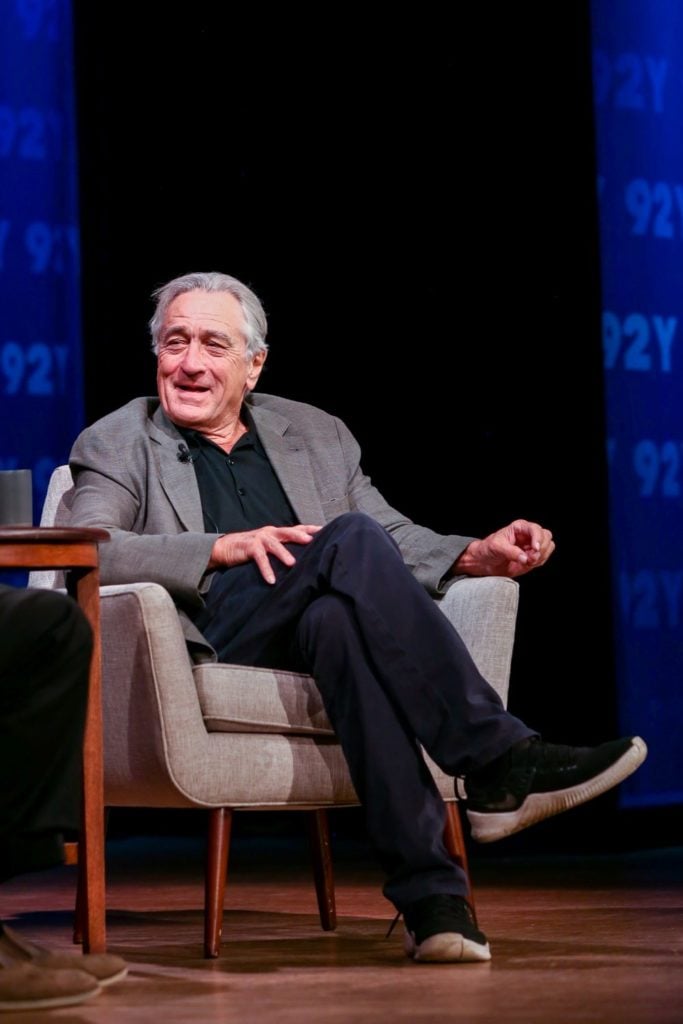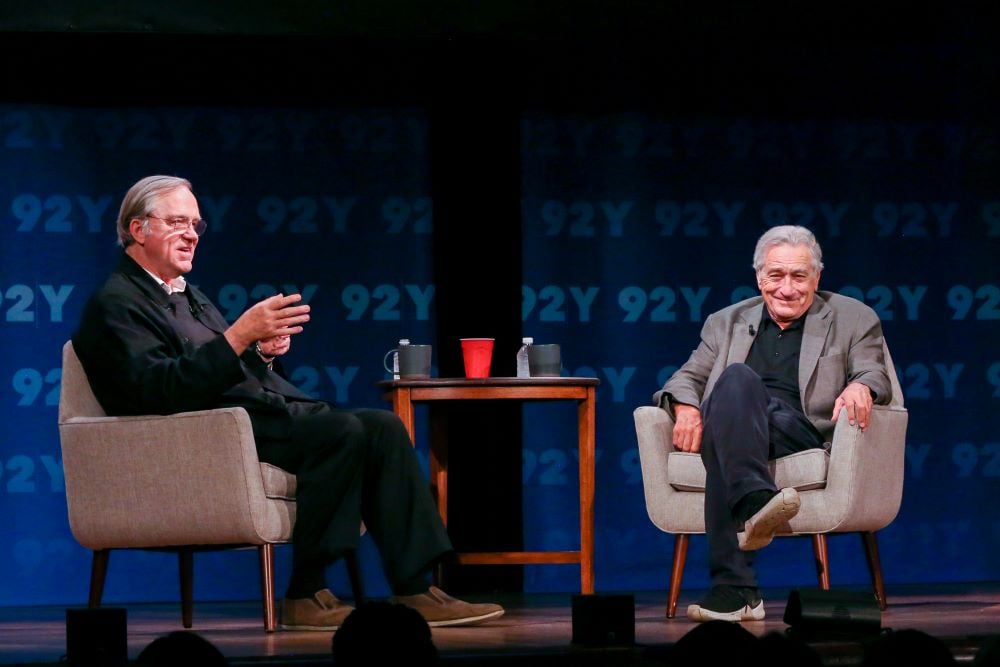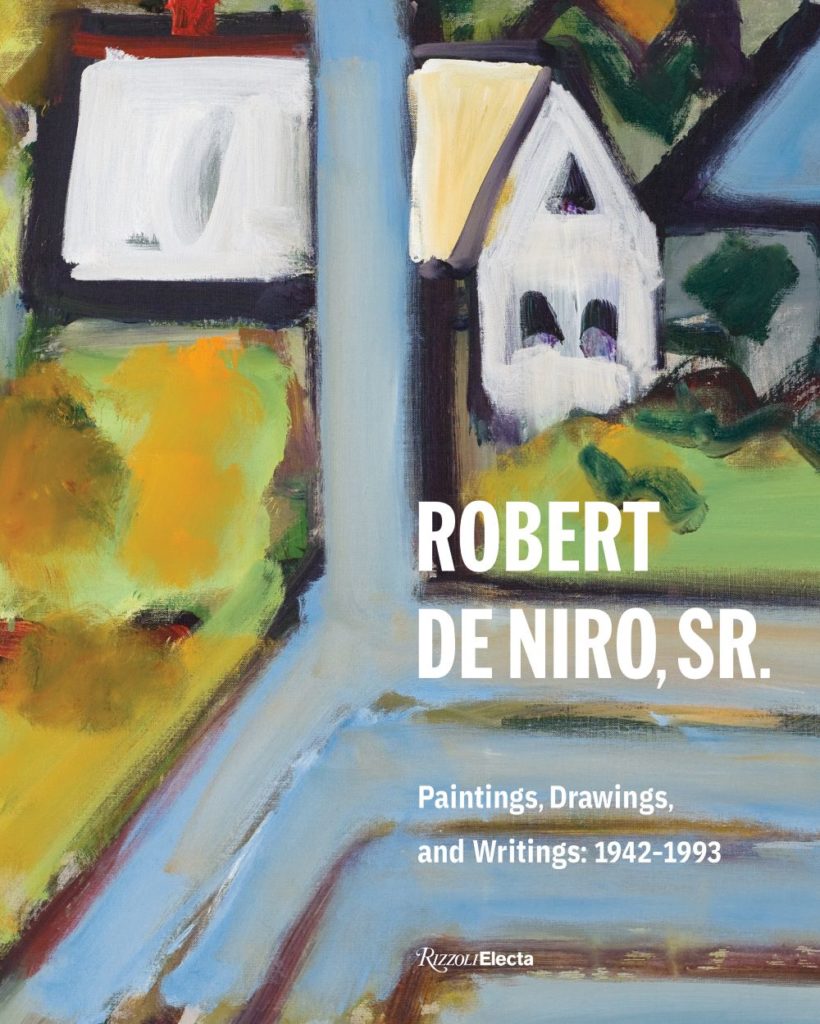Art World
Robert De Niro Joined Robert Storr to Talk About the New Monograph They Worked on Dedicated to His Artist Father’s Legacy
The Oscar-winning actor paid tribute to his father and his art at the 92nd Street Y.

The Oscar-winning actor paid tribute to his father and his art at the 92nd Street Y.

Eileen Kinsella

Actor Robert De Niro might just be the biggest fan of his late father’s painting. But there’s still plenty he’s learning.
In a lively conversation with former Yale School of Art dean and former Museum of Modern Art curator Robert Storr, held at the 92nd Street Y theater on Monday evening, the packed audience repeatedly burst into laughter when De Niro shrugged or answered questions about particular aspects of his dad’s oeuvre with a blunt “I don’t know.”
“I appreciate everything you tell me about my father,” De Niro conceded to Storr. “I didn’t study art or art history.”
Apart from these frequent moments of levity, the event was a moving tribute to De Niro’s father and his lifelong dedication to painting, which is also the subject of a new book released by Rizzoli, Robert De Niro Sr.: Paintings, Drawings, and Writings: 1949–1993. The monograph includes essays by art historian Susan Davidson, Storr, author Charles Stuckey, and painter Robert Kushner.
“What he accomplished in his art was uniquely his and will carry on, as far as I’m concerned, forever,” De Niro writes in the introduction. “I remember as a kid being in his studio and listening to him talk about dealers and artists, and the great works of art and literature he loved, and I understood, even at that young age, that my father was passionate about what he did.”

Robert Storr in conversation with Robert De Niro at the 92nd Street Y. Photo: Andrea Klerides/Michael Priest Photography
At the 92nd Street Y, De Niro told Storr that his father was often wary of dealers, except for “one guy he said was okay… Larry Salander, who turned out to be ‘not right’ to say the least.”
In one of the biggest art world scandals in recent years, Salander filed for bankruptcy in 2010, pleading guilty to fraud and grand larceny. He was sentenced to six-to-twelve years in prison. Several of DeNiro’s father’s paintings were among works caught up in the fallout, since Salander had sold them without permission and kept the proceeds. After years of lawsuits and bankruptcy proceedings, the younger De Niro was eventually able to retrieve some of the works.
(The artist’s estate is now represented by DC Moore gallery in Chelsea, where a show of six works will open next month.)

Image: Courtesy Rizzoli
Born in Syracuse in 1922, Robert De Niro Sr. enrolled in Hans Hoffmann’s art school in Provincetown, Massachusetts, in the late 1930s before heading to Black Mountain College in 1939-1940. By the early 1940s he had set himself up in New York City, where he continued to study under Hoffmann. He met fellow painter Virginia Admiral, De Niro’s mother, in New York, though the relationship was short lived and the artist’s later writing in his personal journals revealed that he was gay.
His work garnered recognition throughout his lifetime, including from Peggy Guggenheim, who debuted his paintings at a 1945 show at her famous Art of This Century gallery, alongside Mark Rothko and Jackson Pollock. De Niro Sr. had a solo show at the gallery in 1946. His work continued to evolve, though he remained loyal to a form of figurative painting at a time when pure abstraction was becoming more and more dominant. His fame and success never reached the heights of some of the contemporaries with whom he he showed.
De Niro lit up when Storr pointed out that the expanded MoMA is reconsidering the canon of art, and that his father’s paintings might have another entryway into art history: “The works have aged well.” That level of reconsideration may seem unlikely (though the new MoMA’s regular reinstallations do promise to shed more light on the previously overlooked). His son has been the champion for his late father’s work himself, placing Robert De Niro Sr. paintings in the numerous restaurants he is involved with, including Tribeca Grill, Locanda Verde, and Nobu (New York and Japan), as well as the Greenwich Hotel.
His father also actually created the design of the menu for the Tribeca Grill, and coasters for the Greenwich Hotel. “I’ve never changed it,” said the actor of the designs.
In addition to keeping and preserving his father’s original downtown New York studio, the Oscar-winning actor helped create a 2014 documentary for HBO, titled Remembering the Artist Robert De Niro, Sr. At the Y, De Niro said it is important to him to preserve his father’s legacy and tell the story of his life and art to his own children and grandchildren. It’s a sentiment echoed in the film: “I just want to see him get his due,” De Niro Jr. says. “That’s my responsibility.”